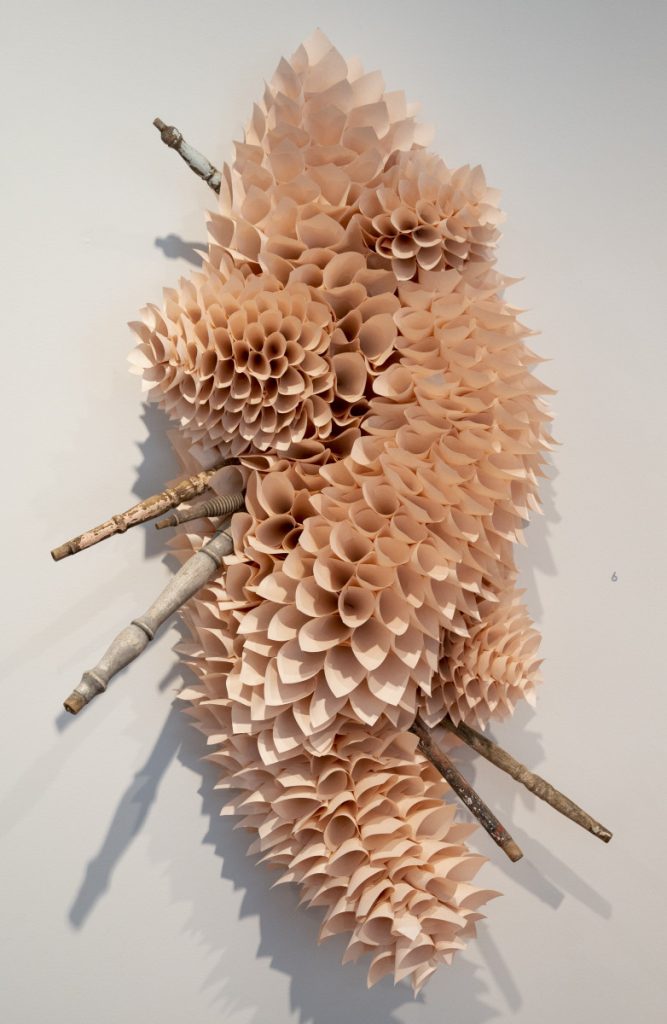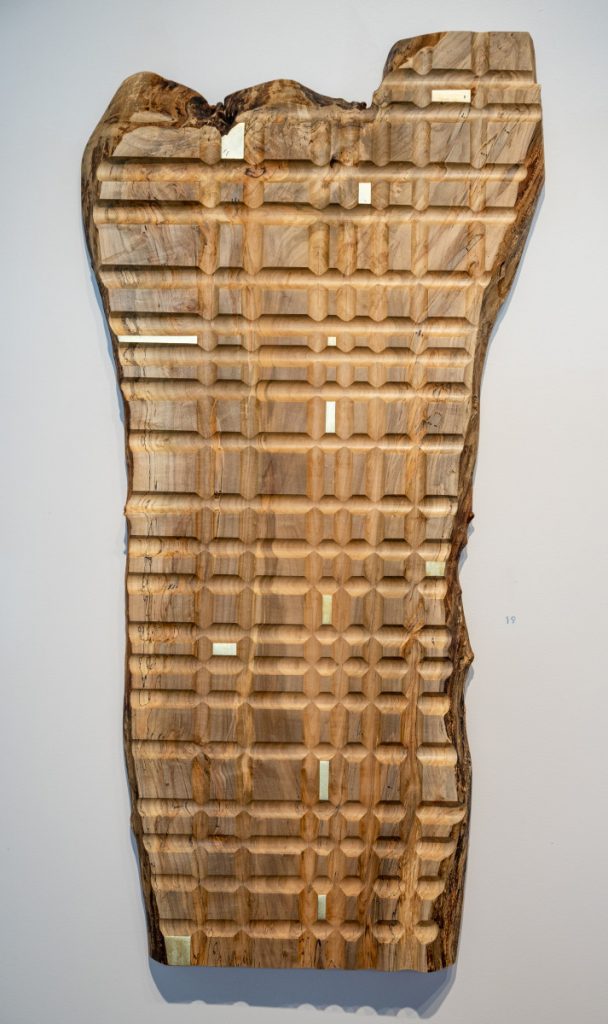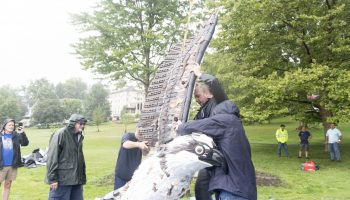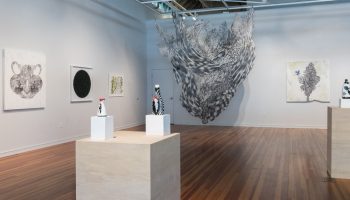There are shapes, patterns and textures present in the natural environment around us. But, these shapes and patterns are often taken for granted.
Artist Samuelle Green is working to highlight natural shapes and is one of six artists whose work is featured in an exhibition titled “Natural Rhythms,” which opens with a reception at 3 p.m. June 26, in the main gallery space of the Strohl Art Center. Each piece in the exhibition utilizes materials from the natural environment.

“I have always been intrigued with artists who choose to create work using non-traditional materials,” said Judy Barie, Susan and John Turben Director of Galleries, who curated the exhibit. “I am especially intrigued when they call on Mother Nature to help. There is a structure of repetitive quality in the natural world.”
All the artists featured in “Natural Rhythms” use non-traditional materials in non-traditional ways within their work. Leah Kaplan is a ceramic artist, while Mami Kato works with semi-abstract sculptures of rice straw. Linda Lopez also works in ceramics, while Caprice Pierucci is a sculptor who works mostly with wood. The final artist, Nate Lucas, currently works in both sculpture and abstract painting, exploring visual and tactile patterns.
In her work, Green strives to mimic shapes from the natural environment. She draws inspiration from the natural world and pays attention to small shapes and textures.
Green’s work evokes images from the natural environment of beehives and flowers. A person’s environment and upbringing, she said, often shapes how they perceive her work.

“I’ve noticed with my work that people from different backgrounds associate it with different things,” Green said. “I’ve done some pieces in Miami that everyone associated more with a coral reef, and in Pennsylvania my work is associated more with beehives and wasp nests. It’s kind of interesting getting different people’s perspectives.”
Green said that growing up in rural Pennsylvania has significantly influenced her art.
“Growing up in a rural area, you weren’t around big cities or giant structures,” she said. “You were looking at beehives or the way grass was growing. It was just a different visual experience growing up in the country. I certainly learned to appreciate animal architecture more than human architecture. For example, the intricate workings of a beehive: things that are around you that you take for granted.”
Green traded the quiet landscapes of Pennsylvania for the hustle and bustle of New York when she attended Parsons School of Design. After graduation, she lived in Brooklyn for nearly 19 years.
Green now balances life in two opposite worlds: the natural landscapes of Pennsylvania and the man-made edifices of New York.
“It’s nice being able to take in all of the culture of the city but then being able to be in my own headspace back in rural Pennsylvania,” she said. “I need to kind of be with myself to figure things out, instead of being constantly surrounded by all this other noise — actual and visual noise.”
Green’s pieces highlight the intersectionality between nature and humanity. Her work references human impositions on the environment.
“Our relationship with nature is really contentious,” she said. “It’s like we’re trying to take over, clear things out and put this building up because our thing is somehow going to be better. Sometimes you’ll see an old tree taking over a signpost, and it’s a bit of a battle. But sometimes things can live together simultaneously and harmoniously.”

In her art, Green balances natural elements with manufactured objects, such as chairs and their legs. Incorporating chair pieces has become a signature part of Green’s artistic style, as have hand-shaped paper cones. She uses the cones to help create her natural shapes. Green introduces recycling into her artistic process by using old chairs and discarded pieces of paper.
“The cones are all made out of pages of books that are oftentimes being discarded,” she said. “Some are overruns from the print industries and libraries getting rid of them. So, it’s a recycling process. Also, with found objects, I really like the mystery behind them. Chair pieces and books kind of hold this memory for me: ‘Where did this come from and why was it discarded?’ They all have a bit of their own story.”
Overall, Green hopes her art makes viewers appreciate the beauty, intricacy and detail of nature.
“I’d like for people to make that connection between nature and my art,” she said. “I hope it puts in perspective how much time it takes for the things in nature to be created.”





